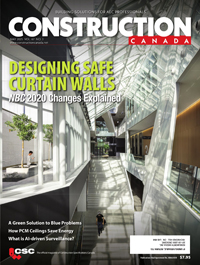Modern rainscreens: The ultimate upgrade for retrofits
By David Hohenstern
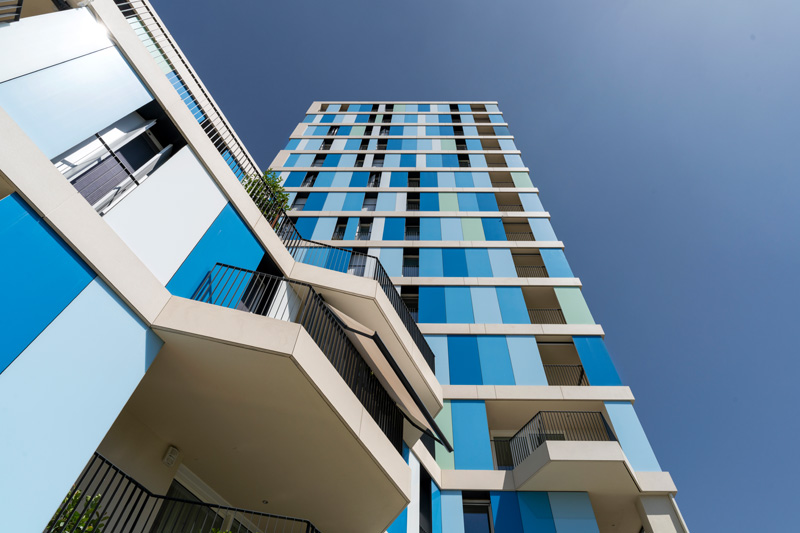
A renovation can be triggered by various factors, including water intrusion issues, delaminating exterior finishes, cold walls, and new fire and energy performance regulations. Often, a range of issues happening with increasing frequency indicate it is time for an update. Regardless of what prompts a renovation, it is an opportunity to build back better, enhance the building’s performance, and ensure good building science is followed.
Give that building a jacket
Exterior wall assemblies are like multitasking performance jackets—they withstand longer lifespans while protecting against changing weather conditions, safeguarding interior environments, and promoting occupant health and well-being.
However, sometimes, a building needs a new jacket, and retrofitting for an esthetic refresh also provides an opportunity to enhance the wall assembly’s performance. Key components required include proper continuous air sealing and water-resistive barriers, thermal insulation, and a rainscreen ventilation cavity. These elements collectively form a high-performance exterior wall assembly.

The perfect jacket: A modern rainscreen system
When retrofitting an old building with a new jacket, air sealing is critical. A continuous air seal is best achieved with careful air barrier detailing, particularly at openings and corners, and transitions to the roof and foundation.
The addition of a rainscreen system then protects inner walls from weather exposure and prevents water and moisture from penetrating the building envelope. The benefits of a modern rainscreen system include:
- Energy efficiency—Rainscreen cladding improves thermal performance, reducing heating and air conditioning costs by up to 40 per cent annually.
- Insulation—When done correctly, an added insulation layer enhances thermal efficiency and limits condensation.
If done and installed incorrectly, condensation can occur in areas where it should not, leading to moisture buildup and potential damage. There must not be a gap or pockets between the sheathing and exterior insulation. - Protection—The cladding protects the building’s exterior from wind, rain, and snow, extending its lifespan and reducing maintenance costs.
- Structural stability—The air cavity in the rainscreen mitigates temperature variations, reducing structural movements and the risk of cracks.
- Acoustic insulation—An additional insulation layer helps block outside noise, which is beneficial in urban environments.
- Design freedom—With rainscreen systems, an exoskeletal system will support a variety of architectural finishes, such as glass, stone, wood, and brick, as well as finishes that use a variety of colours, textures, and shapes.

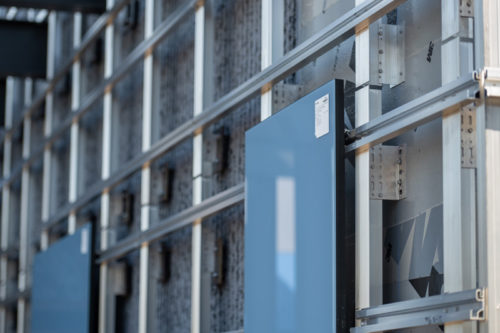
Components of a modern rainscreen system
A rainscreen is made up of several key structural components that work together to manage airflow and moisture effectively; these components usually include:
- Outer cladding material—The cladding is a building’s first line of defence. Depending on the climate zone and local environment, choose the cladding type (e.g. fibre cement, metal panel, HPL, specialized render systems, etc.) based on the hazards present and the level of protection needed in a building.
- Air gap or cavity—A ventilated space behind the cladding that helps manage moisture.
A modern rainscreen system incorporates a larger air gap of 20 mm (0.78 in.) or more, compared to traditional rainscreens used in wall assemblies, to promote drainage and drying. - Air and water-resistive barrier (AWRB)—This is attached directly to the building’s frame and is the last defence against air leakage and moisture intrusion. The AWRB may be permeable or impermeable to water vapour, depending on the climate. A good rule of thumb is that a permeable AWRB should be used in humid climates to allow moisture to escape from the building envelope. An impermeable barrier is better suited to keep moisture out in dry, cold climates. Always factor in local climate conditions when selecting an AWRB.
- Exterior insulation (a building’s overcoat)—This outer insulation layer can handle moisture and drying without degrading or reducing RSI value. Depending on the building owner’s thermal requirements and targets, this layer may be supplemented. Also, energy codes require different degrees of exterior wall thermal performance.
- Venting profiles—Several ventilation options, including venting flashings, perforated profiles, and weep holes, help direct moisture away from wall surfaces and keep out pests.
Straighten walls without moving them
When most buildings are built, neither the building owner, architect, or applicator worries about straight exterior walls. Their primary focus is on everything from the cladding inward. Therefore, the exterior surface inherited from the initial construction is the wall to work within a retrofit. There is a chance it may be straight, but more than likely, it will not be. One of the benefits of a rainscreen system is adding an exoskeleton to the exterior wall, allowing teams to adjust and square up the wall before adding the new cladding.
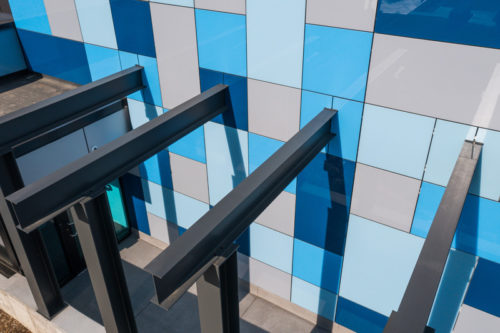
The cost of a rainscreen system
The budget is always the elephant in the room. A rainscreen system may increase upfront costs, but such investments will benefit building occupants and owners. Among these benefits are:
- Long-term performance—All the components of a rainscreen system work together to ensure optimal performance over the lifespan of a building.
- Durability—These components are also built to last, with an eye toward future adaptability, reducing maintenance and repair costs over the structure’s lifetime.
- Enhanced comfort—A sophisticated exterior that delivers thermal efficiency protects the building and the rainscreen from severe weather, making for a more comfortable interior. Improved thermal efficiency offers a payback on the investment via reduced energy costs and consumption, which also benefits the environment.
There is always a delicate balance between performance and cost; however, it is important to consider the savings year-over-year that will be realized with a rainscreen system. The right one can completely transform an old building, making it more thermally efficient and esthetically pleasing, allowing it to compete with newer construction and design.
According to the National Renewable Energy Laboratory (NREL), deep energy retrofits achieve at least a 50 per cent reduction in energy usage and usually include building envelope upgrades, building electrification, and energy conservation measures that enhance building performance and occupant value.
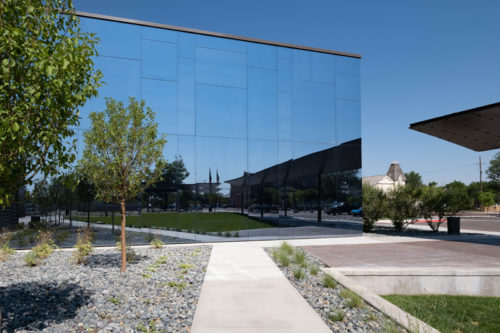
Is the manufacturer important?
In the 20 years since rainscreen systems were introduced, the number of manufacturers offering rainscreen products has grown. Several excellent solutions are on the market today, but choosing the right manufacturer is essential. When considering which product to invest in, consider these questions:
- Does the manufacturer offer a complete system? The fewer manufacturers to deal with, the easier the project will be. One manufacturer that provides everything from the sheathing out is ideal because one warranty will cover the entire system. The last thing specifiers want is to stitch together a piecemeal system and hope the subcontractors have successfully installed them to create a properly sealed envelope.
- Has the system undergone extensive testing? Specifiers will want a widely used, trusted, and, most importantly, thoroughly tested system. One of the most recognized tests for rainscreen systems is the AAMA 509. It was the first North American testing standard for drained and back-ventilated (DBV) rainscreen cladding. It was developed to benchmark DBV rainscreen performance and provides specific ventilation and moisture control criteria. When selecting, ensure the chosen rainscreen meets this standard.
- Does the manufacturer offer on-the-ground service support? The right company will have project service managers who deeply understand building science and can help dial in the needed systems. They will provide thermal modelling to balance the thermal target with the structural loading and work with the general contractor (GC) to ensure the project progresses smoothly.
- Is there a need for a manufacturer with expertise in a particular area? This depends on the specifics of a project. If there is significant water intrusion into the interior of the building, for example, consider a company with expertise in subconstruction. Or, if dealing with extreme weather conditions is taking a toll on the cladding, consider a company with more cladding expertise. However, all larger manufacturers have the knowledge and experience to solve virtually any problem. They have seen it all and have the expertise to design a rainscreen system that meets specific needs and ensures moisture does not end up in areas where it can do more harm than good.
- Does the manufacturer offer a wide variety of design options? This is very important. Here is why. If the rainscreen system has limited design options, the architect will be restricted in meeting the esthetic goals of the project. So, by default, the system’s functionality is being prioritized over the appearance of the building. Also, buildings need to be refreshed every so often. By installing a system with endless design possibilities today, updating only the cladding later instead of replacing the entire rainscreen to achieve a specific look is possible. The right product and manufacturer will offer various design options so the client can achieve the look and feel they desire now and in the future.
- Is the system eco-friendly? This is becoming more important with every passing year. Specifiers need a system built for the future that offers lightweight solutions, recycled materials, and sustainable components. Building codes are getting stricter, and the expectation is that building owners will do their part to be mindful of the environment in new construction and retrofits.
The importance of project managers
At the risk of overstating this, project managers are vital with a massive undertaking such as a rainscreen installation. Pertaining to project management from a manufacturer and not a third-party vendor, an experienced project manager will facilitate the project from start to finish—from proper cost estimations at the beginning of the project to determine how many parts and pieces are needed for the system, and along the way, co-ordinating with engineers and other experts in these systems to provide specifications to ensure solutions are tailored to the project needs. They will ensure the project meets energy requirements, address structural requirements, and help stay on schedule and budget.
Beware of the Frankenstein system
As noted above, the fewer manufacturers to deal with, the better. Ideally, one manufacturer will offer all the components required for a rainscreen system. After all, a rainscreen system is a system, not a kit of parts. A Frankenstein system is the total opposite of that. Often, one manufacturer is hired for the esthetics, another for the air moisture barrier, and another for sub-construction. A Frankenstein system is a setup for failure in the long term. If something goes wrong, all the manufacturers will point at each other while the specifier is stuck in the middle. Keep it simple. Find one manufacturer that can provide a total solution from the sheathing out; that way, there is no question about who needs to help address whatever issues arise.
Seeing is believing
When sourced and installed properly, a rainscreen system functions beautifully and saves money from day one. Consider proposing a modern, proven rainscreen system for the next retrofit project. The right one can transform even the oldest building into a modern, thermally efficient work of art—giving the architect freedom to achieve virtually any look.
Author
David Hohenstern is a research and development manager for rainscreen at Sto Corp. He joined Sto in May 2022. He is a voting member of the C17 committee at ASTM, which owns and manages the fibre cement standards used in the Americas; E05, the committee on Fire Standards; and E06, the committee on Performance of Buildings. Hohenstern is a two-time graduate of the Georgia Institute of Technology.



